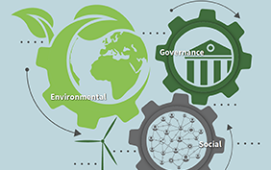
Taming the data management challenges of ESG integration offers huge rewards for financial institutions. But the difficulty of overcoming those hurdles has increased as the volume and variety of that data swells, exposing firms to potentially severe operational, legal and reputational risks.
For that reason, getting ESG data management right has become an important goal of institutions as customers and regulators demand more effective integration of sustainability themes in their investment, risk and reporting processes.
The key concerns of sustainability market data professionals were articulated in this week’s Data Management Insight webinar, which focused on how ESG data could be best integrated into, managed within and accessed from firms’ technology systems.Four Pillars
During the “ESG Data Sourcing and Management to Meet Your ESG Strategy, Objectives and Timeline” event, Clarity AI board director Ángel Agudo argued that there are four pillars to implementing a “perfect” ESG data management strategy.
Firstly, Agudo said firms must be able to onboard multiple data sources quickly and combine them effectively with market data. The complexity of ESG means that it’s unlikely that one provider will be able to offer all the datasets any one institution will need. Having the capabilities to “mix” it with financial data would be crucial, Agudo said.
That was a point echoed by Neuberger Berman head of ESG data Aria Goudarzi, who said that being able to map that information to data on asset-issuing entities was the only way to make sense of ESG data. That, he said, would require standardisation of entity identifiers; at the moment, however, data providers often use their own proprietary classification systems.
Mapping Data
The difficulties of mapping ESG across different datasets had prompted many firms to build their own ratings and scoring models, said Alveo chief product officer Neil Sandle. While it is an oft-stated criticism of ESG data, Sandle made no apologies for repeating that making information comparable – the key aim of data matching – was the very essence of getting ESG data right; without that, investors would not be able to make well-informed risk and allocation decisions.
On the subject of data sourcing, Goudarzi added that providers needed to be chosen carefully, one at a time, so that institutions could avoid “drowning” their systems in data that they are unable to use. Focusing on what is really needed is the most important element in the data acquisition process, he said. On top of that, having the right architecture to ingest and process those datasets would be fundamental in building a solid data management setup. Without those foundations, he said, the “whole building will crumble before you”.
Agudo’s second recommendation for a robust ESG data management setup is to ensure the quality of that data. As long as there has been ESG data, there have been issues with its quality; datasets are often incomplete, they lack standardisation and the data’s unstructured nature makes integration more challenging.
Nuanced Approach
While he agreed in principle with an argument put forward by Alveo’s Sandle that ESG data should be treated in the same way as all other data within institutions’ systems, Agudo said it wasn’t always possible. ESG data is nuanced, he said, and because of that required additional processing steps. Chief among those, he said, is the need to accurately identify and consider the methodology used by the data’s provider in putting together the dataset.
Securing that data was Agudo’s third management pillar. With so many data sources being engaged, there is a risk that confidentiality provisions could be breached as institutions slice, dice and combine different datasets.
And finally, he said, having the analytical capabilities to “transform that data into information” is important in helping firms make better decisions.
The goal of good data management was to ensure ESG data worked for an institution. The benefits of getting it right, the panel said, were better risk-management models, better access to markets, greater workflow efficiencies and the avoidance of legal actions and reputational damage.
Most importantly, argued Neuberger Berman’s Goudarzi, was the knowledge that being able to make allocation decisions backed by properly managed data would ensure that capital was being directed to the securities and companies that would be best placed to address the climate and social issues facing the world.
Subscribe to our newsletter





